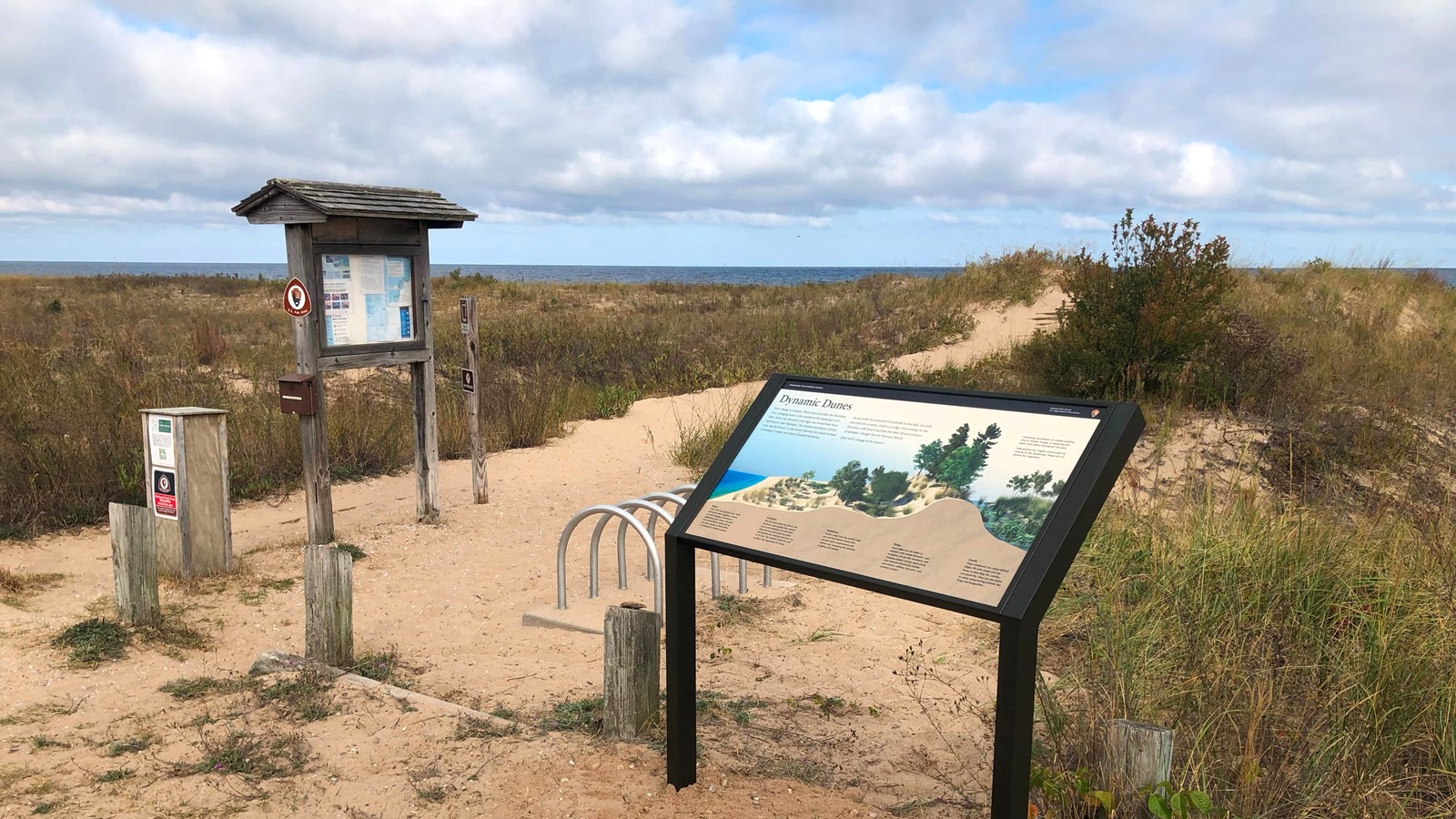Last updated: August 22, 2025
Place
Wayside: Dynamic Dunes

Audio Description
Main Exhibit Text
Here change is constant. Water and wind alter the shoreline. Ever-changing water levels transform this landscape over time. Some two thousand years ago, you would have been standing in Lake Michigan. The forested backdune, behind you, was the beach.
As lake levels lowered, the beach became a foredune, a swale, and then a forested backdune. As you walk the protective boardwalk to the lake, you will descend into a swale, climb to a ridge, then emerge to the foredune, with beach and lake beyond. All are evidence of dynamic changes here at Peterson Beach.
How will it change in the future?
Background Image
The background of this exhibit is an illustration depicting a side-profile of the dunes with their associated plants. The illustration shows the lake on the left with five different habitats going to right: beach, foredune, backdune, ridge, and swale. The plants in the beach and foredune areas are sparse and shrubby. Taller trees grow in the backdune and ridge habitats. The swale is filled with water and includes flowering plants and lily pads.
Habitat Descriptions
Beach
This is the most dynamic zone. Wind and waves work together, creating an ever-changing environment – depositing sand, stones, and plan and animal debris. Winds pick up dray sand, moving it inland where it is stopped by foredune grasses.
Foredune
The first dune along the shore is the foredune. Here grasses, like marram, act as soil stabilizers. Its roots reach deep into the sand capturing water and sending out underground stems up to 20 feet. This network holds the sand in place—the beginning of a dune.
Backdune
Farther away from the water’s edge, you will find thicker forests that provide cooler temperatures and moister soil, increasing the diversity of plants and animals.
Ridge
Sand ridges can be single or multiple with swales between. Low evergreen shrubs like bearberry and creeping juniper occupy dune crests. Less frequent dominants include sand cherry, willows, jack pine, and common juniper.
Swale
These sheltered, low areas behind ridges fill with water and are home to blue-flag iris, cattails, and pond lily. They are also home to many water-loving animals like frogs and dragonflies.
Caption
Increasing occurrences of volatile weather, due to climate change, is impacting this beach and others throughout the park.
Help protect this fragile environment by staying on the boardwalk. Please do not disturb the vegetation.
